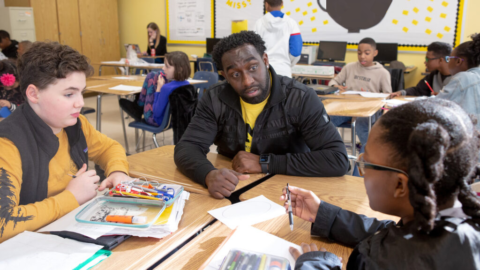Deep Dive: How Math Practices 7 and 8 Power Student “Lightbulb” Moments
Our final series installment on how Math Practices 7 and 8 give students opportunities to work through mistakes and make their own pathways and breakthroughs.
Related Resources
article
Deep Dive: How Math Practices 5 and 6 Build Student Confidence and Ownership of Their Learning
The next installment in our series explores how Math Practices 5 and 6 help students approach problems with confidence and express their conceptual understanding with precision.
article
Deep Dive: How Math Practices 1–3 Help All Students Access Math Learning and Build Skills for the Future
Part one of our series on the Mathematical Practices focuses on why they matter for student learning, and the role high-quality instructional materials play in supporting teachers to incorporate them meaningfully into the classroom.
article
Deep Dive: Mathematics for All – How Modeling Transforms Student Learning
Educator Tim Truitt shares why Math Practice 4 is integral to making mathematics relevant and meaningful for each and every student.


